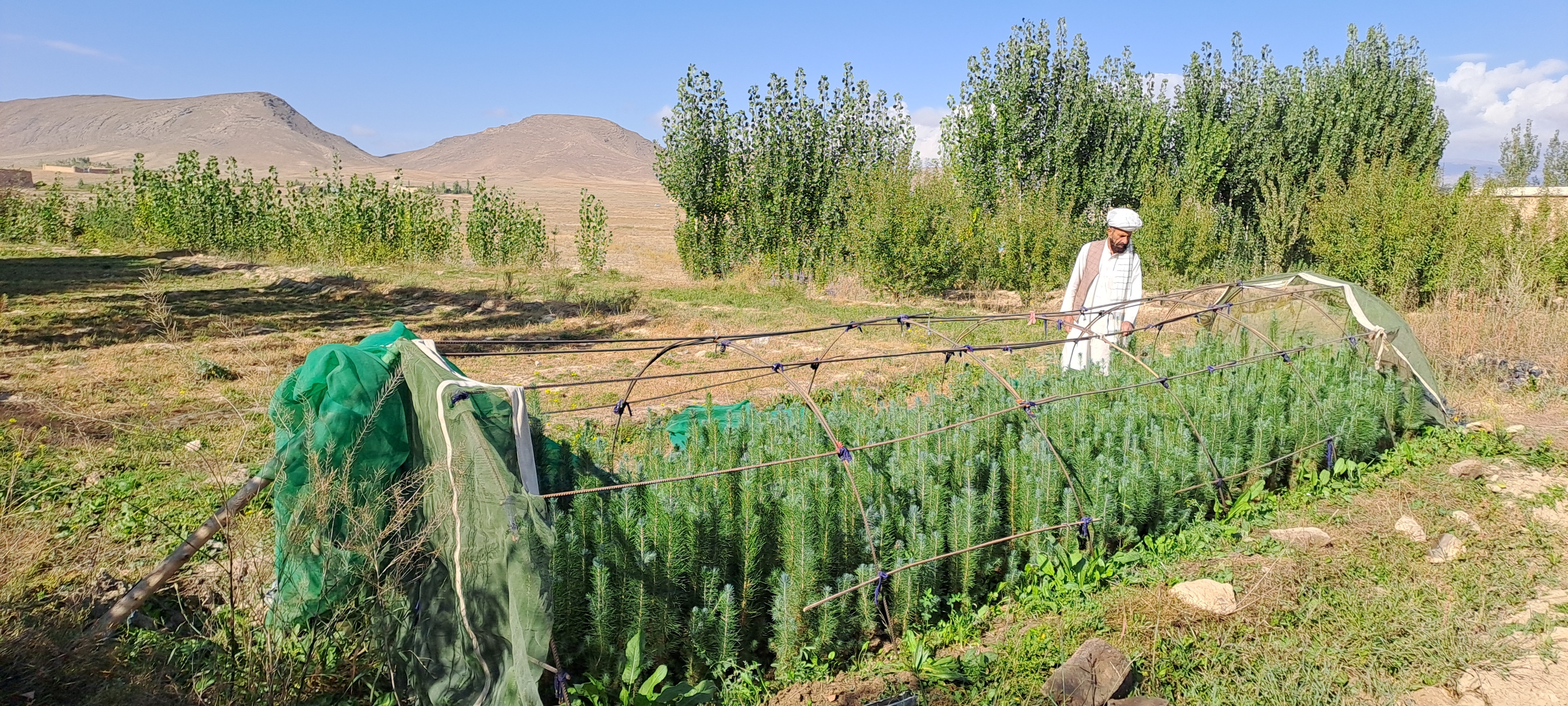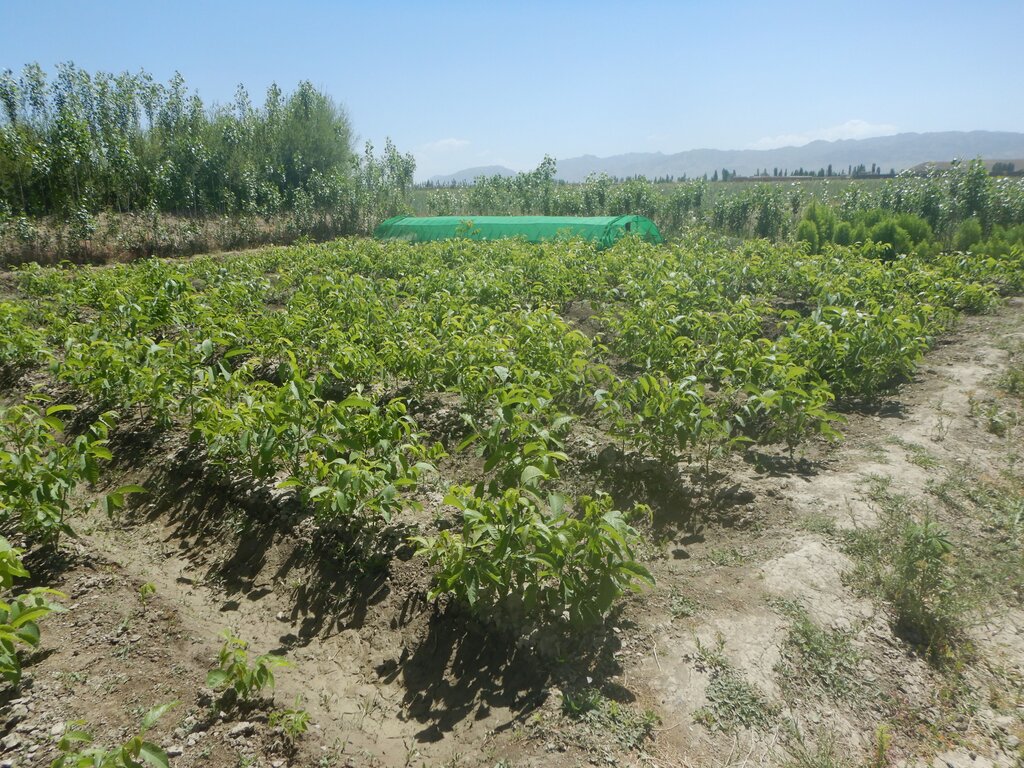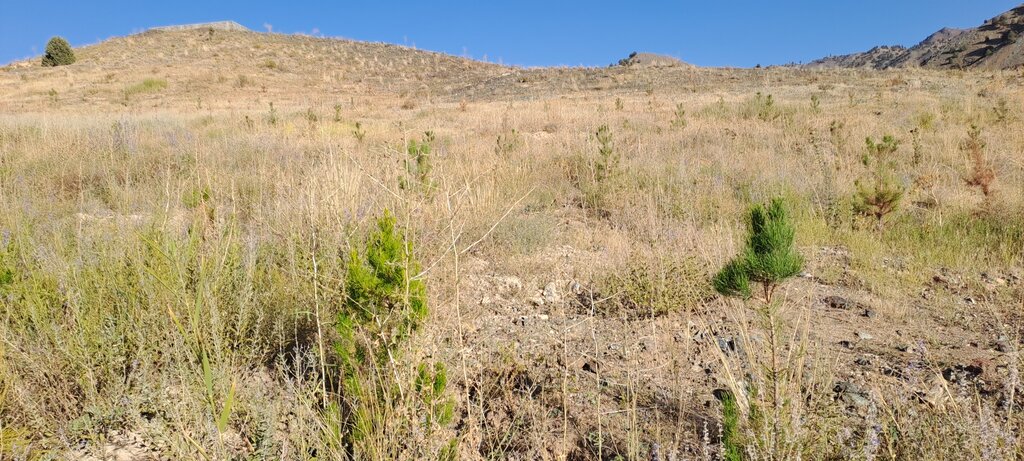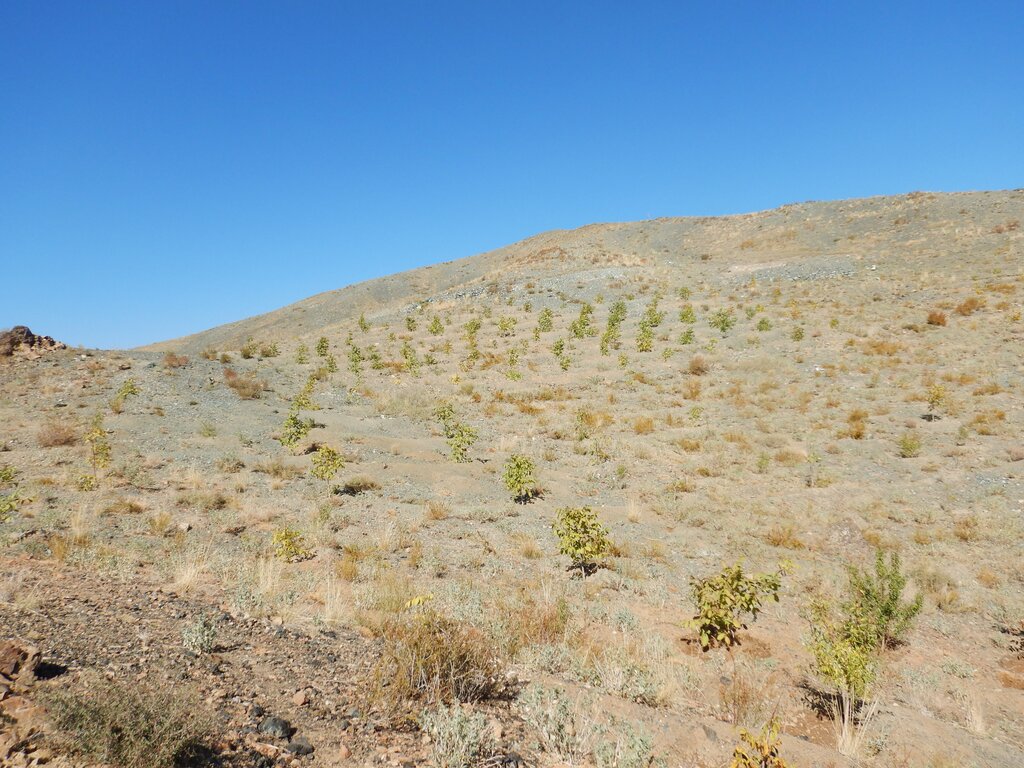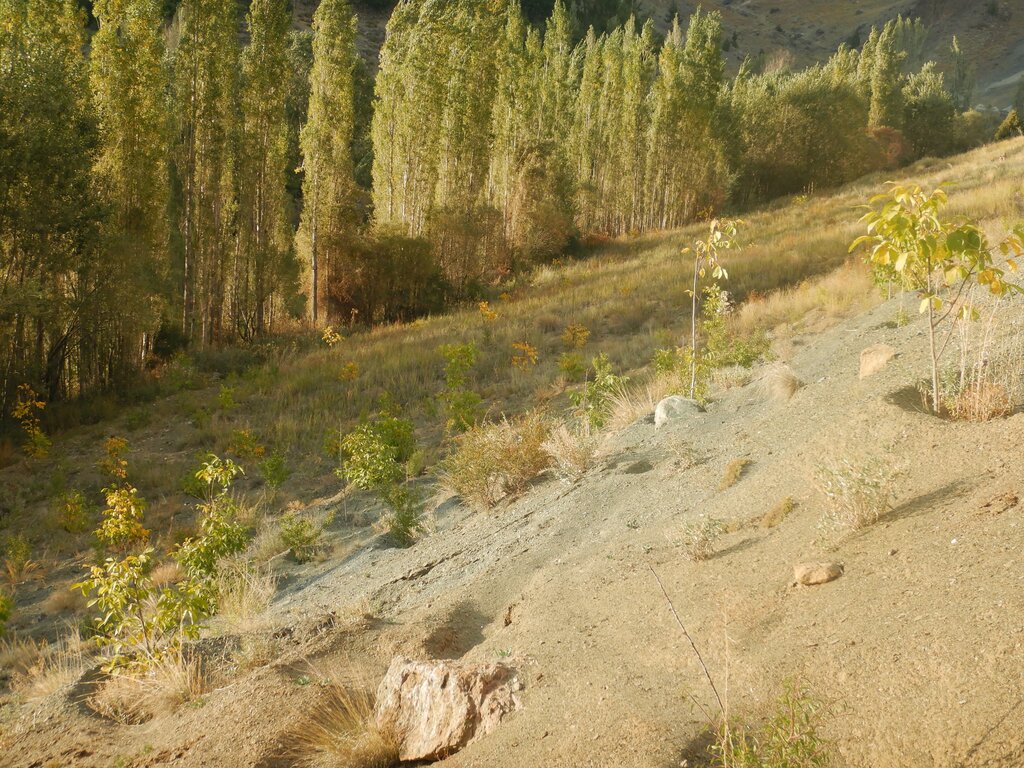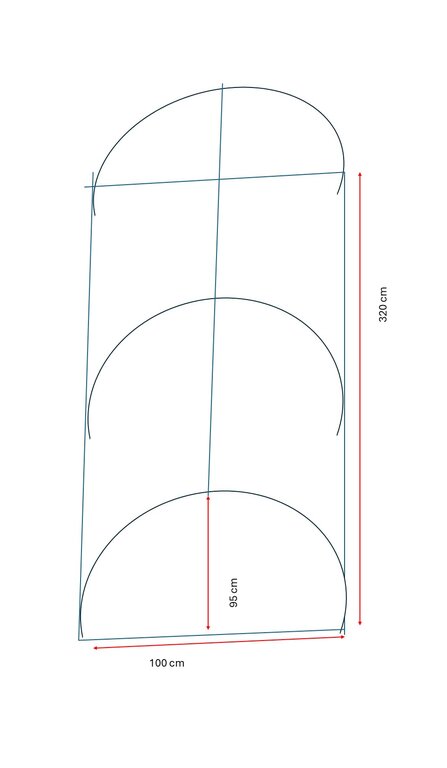Restoration in the High Conservation Value Forests (HCVF) through community-led initiatives in Paktya [Afghanistan]
- Création :
- Mise à jour :
- Compilateur : Mohammad Wazir Ahmadzai
- Rédacteurs : Mir Wali Khan Lakanwal, Mohammad Mustafa Sahebzada, Megha Bajaj, Megha bajaj
- Examinateurs : Rima Mekdaschi Studer, Illias Animon, Muhammad Ishaq Safi
Chilghuza and Nakhter
technologies_7454 - Afghanistan
- Résumé complet en PDF
- Résumé complet en PDF pour impression
- Résumé complet dans le navigateur
- Résumé complet (non formaté)
- Restoration in the High Conservation Value Forests (HCVF) through community-led initiatives in Paktya: 5 mars 2025 (inactive)
- Restoration in the High Conservation Value Forests (HCVF) through community-led initiatives in Paktya: 24 mars 2025 (inactive)
- Restoration in the High Conservation Value Forests (HCVF) through community-led initiatives in Paktya: 7 mai 2025 (public)
Voir les sections
Développer tout Réduire tout1. Informations générales
1.2 Coordonnées des personnes-ressources et des institutions impliquées dans l'évaluation et la documentation de la Technologie
Personne(s)-ressource(s) clé(s)
exploitant des terres:
Sayed Hakim Shah
Forest management Association
Afghanistan
exploitant des terres:
Sabawon Samiullah
Forest mangemnet Association
Afghanistan
Nom du projet qui a facilité la documentation/ l'évaluation de la Technologie (si pertinent)
Community-based sustainable land and forest management in AfghanistanNom du ou des institutions qui ont facilité la documentation/ l'évaluation de la Technologie (si pertinent)
FAO Afghanistan (FAO Afghanistan) - Afghanistan1.3 Conditions relatives à l'utilisation par WOCAT des données documentées
Le compilateur et la(les) personne(s) ressource(s) acceptent les conditions relatives à l'utilisation par WOCAT des données documentées:
Oui
1.4 Déclaration sur la durabilité de la Technologie décrite
Est-ce que la Technologie décrite ici pose problème par rapport à la dégradation des terres, de telle sorte qu'elle ne peut pas être déclarée comme étant une technologie de gestion durable des terres?
Non
2. Description de la Technologie de GDT
2.1 Courte description de la Technologie
Définition de la Technologie:
An integrated community-led initiative has been established to restore the degraded forests in Paktya province. This initiative focuses on setting up nurseries and incorporates both indigenous and scientific knowledge to cultivate climate-resilient species, such as Cedrus deodara and Pinus gerardiana. These efforts have enhanced the community’s knowledge and skills in sapling production and transplantation, leading to significant improvements in the productivity of these key species, which holds substantial ecological, social, cultural and economic values.
2.2 Description détaillée de la Technologie
Description:
The technology is applied in the communities of Ahmad Aba and Sayed Karam districts in the Paktya province, focusing on restoration of high conservation value forests. It is implemented through direct support of 13 Forest Management Associations (FMAs).
Key members of FMA participated in capacity building focused on community -based natural resources management (CBNRM), establishment of community-based nurseries and restoration of degraded forest .The aim of the capacity building initiative was to enhance the ability of the associations to restore the degraded area and implement sustainable practices, particularly through establishment of community-based nurseries, production of saplings and subsequent planting of these saplings in targeted restoration sites .
Over the past three years, 67 nurseries have been established, focusing on climate- resilient species such as Cedrus deodara, Pinus jerardiana, and Juglans regia, among others species by integrating both indigenous and scientific knowledge. Indigenous knowledge includes practices such as pre-irrigation, the use of animal-powered initial plowing with hand-held hoes, weed removal, and other traditional techniques. Scientific recommendations include improvement of sapling production, adaption of soil inoculation with Mycorrhiza, species-specific sowing methods, controlled temperature management in greenhouses, effective watering/irrigation techniques (manually and using sprinklers).
The project has significantly enhanced sapling production and transplantation for reforestation purposes. The community-based nurseries were established using carefully selected seeds, chosen based on seed quality, sowing timing, and the process of breaking seed dormancy. Saplings were then raised in the nurseries for the first 2 to 3 years until, they are ready for transplantation. These saplings are then transplanted to the degraded forest areas. The land preparation and digging of pits were carried out in the restoration sites before transplanting saplings. After transplanting, FMAs took care of the saplings. Additionally, mechanical pests and diseases control measures were employed to produce good-quality saplings in community-based nurseries. These interventions raised community awareness on forest condition and management and thereby enhanced their capacities to improve the forest cover.
Major activities include site assessment and pre-planning, selection of high conservation value tree species, site selection, technical training on site management (preparation of soil, sowing method, irrigation management, greenhouse) and capacity building of the communities and beneficiaries on nursery soil mixture preparation, breaking of dormancy using different techniques, sapling production and transplantation.
The 13 Forest Management Associations (FMAs) are the legal institutions for the management of natural resources; they hold a license for reforestation activities in degraded forests. They are officially registered with Ministry of Agriculture, Irrigation and Livestock (MAIL). FMAs are responsible for implementing the restoration measures. These communities showed commitments for the transplantation, irrigation and regular patrolling of the saplings.
The goal of the restoration efforts is to enhance the capacity of the local community on methods of in-situ and ex-situ biodiversity conservation and creation of a recreational site. It also aimed to raise the awareness towards mitigation of climate change, and ultimately improve the livelihoods of rural populations. The application of technologies offers cost-effective and eco-friendly restoration of the high conservation value forest especially of pine (Pinus jerardiana) and deodar (Cedrus deodara). Additionally, it provided work opportunities and income generation for 100 families. The technology is well-suitable for replication and adaptation in the local context. As a result, the local community consistently produces the necessary saplings for reforestation and supplies them to the project at a reasonable cost every year.
2.3 Photos de la Technologie
2.4 Vidéos de la Technologie
Date:
09/12/2024
Lieu:
Afghanistan
Nom du vidéaste:
Mohammad Wazir Ahmadzai
2.5 Pays/ région/ lieux où la Technologie a été appliquée et qui sont couverts par cette évaluation
Pays:
Afghanistan
Région/ Etat/ Province:
Paktya
Autres spécifications du lieu:
Ahmad Aba and Sayed Karam
Spécifiez la diffusion de la Technologie:
- appliquée en des points spécifiques ou concentrée sur une petite surface
Est-ce que les sites dans lesquels la Technologie est appliquée sont situés dans des zones protégées en permanence?
Non
Commentaires:
In each forest management association, five community-based nurseries have been established, each covering less than 0.004 hectares. Once the saplings are ready for transplantation, typically after 2 to 3 years, they are transported from the nurseries to the restoration sites for planting. A total of 2,718 hectares of forest area have been restored in both Ahmad Aba and Sayed Karam districts. Community-based nurseries have been established in various villages and are being scaled up through the nursery owners to produce the saplings required for reforestation. The map highlights only these two districts.
Map
×2.6 Date de mise en œuvre de la Technologie
Indiquez l'année de mise en œuvre:
2021
2.7 Introduction de la Technologie
Spécifiez comment la Technologie a été introduite: :
- par le biais de projets/ d'interventions extérieures
3. Classification de la Technologie de GDT
3.1 Principal(aux) objectif(s) de la Technologie
- réduire, prévenir, restaurer les terres dégradées
- préserver l'écosystème
- conserver/ améliorer la biodiversité
- s'adapter au changement et aux extrêmes climatiques et à leurs impacts
- créer un impact économique positif
3.2 Type(s) actuel(s) d'utilisation des terres, là où la Technologie est appliquée
Les divers types d'utilisation des terres au sein du même unité de terrain: :
Non

Forêts/ bois
- Plantations d'arbres, boisements
Plantation d'arbres, afforestation: Précisez l'origine et la composition des espèces. :
- Variétés mixtes
Type de plantation d'arbres, d'afforestation:
- plantations de forêts sèches subtropicales - Pinus spp.
Type d’arbres:
- Espèces de Pinus (pin)
Est-ce que les espèces d’arbres précisées ci-dessus sont des espèces d'arbre arbres à feuilles caduques ou à feuilles persistantes ?
- forêt mixte décidue/ à feuillage persistant
Produits et services:
- Bois d'œuvre (de construction)
- Bois de chauffage
- Fruits et noix
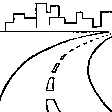
Implantations, infrastructures
- plastic tunnels in nurseries
Remarques:
The community-based nurseries are established in the village near to the forest areas.
3.3 Est-ce que l’utilisation des terres a changé en raison de la mise en œuvre de la Technologie ?
Est-ce que l’utilisation des terres a changé en raison de la mise en œuvre de la Technologie ?
- Non (Passez à la question 3.4)
3.4 Approvisionnement en eau
Approvisionnement en eau des terres sur lesquelles est appliquée la Technologie:
- mixte: pluvial-irrigué
Commentaires:
Nurseries are irrigated. After transporting saplings, supplementary irrigation is required till five years. After the establishment of saplings, rainfed irrigation is enough.
3.5 Groupe de GDT auquel appartient la Technologie
- gestion des plantations forestières
- Amélioration de la couverture végétale/ du sol
- récupération/ collecte de l'eau
3.6 Mesures de GDT constituant la Technologie

pratiques végétales
- V1: Couverture d’arbres et d’arbustes

structures physiques
- S1: Terrasses
- S4: Fossés isohypses, trous
3.7 Principaux types de dégradation des terres traités par la Technologie

érosion hydrique des sols
- Wt: perte de la couche superficielle des sols (couche arable)/ érosion de surface

érosion éolienne des sols
- Et: perte de la couche superficielle des sols (couche arable)
3.8 Prévention, réduction de la dégradation ou réhabilitation des terres dégradées
Spécifiez l'objectif de la Technologie au regard de la dégradation des terres:
- réduire la dégradation des terres
- restaurer/ réhabiliter des terres sévèrement dégradées
4. Spécifications techniques, activités, intrants et coûts de mise en œuvre
4.1 Dessin technique de la Technologie
Spécifications techniques (associées au dessin technique):
All the saplings are grown under plastic tunnels, except for walnut, which is cultivated on raised beds (see photo). The technical drawing shows a prototype of the plastic tunnels used in the nursery. The plastic tunnel are constructed with dimensions of 95 cm in height, 100 cm in width, and 320 cm in length. During the winter, the saplings in the polybags under the tunnel are covered with transparent plastic to protect the saplings from the cold and in the summer, the plastic is removed and replaced with green netting to protect the saplings from overheating inside the tunnel and providing shade. The tunnels are oriented in a north-south direction to optimize exposure to daily sunlight. The selected area for plastic tunnel establishment was flat and at lower altitude minimizing the severe impacts of wind, sunlight, rain fall, snow fall and climate change.
Ventilation holes were installed on both ends of the tunnels to ensure optimal air circulation, promoting healthy plant growth and development. Each tunnel’s construction utilized 15 kilograms (kg) of 12 mm steel bars. Additionally, a green net with a width of 4 meters, along with 15 square meters of plastic (10 % transparent and 1 mm thick) was required to cover the tunnels. After 2 to 3 years, then the saplings are transplanted to restoration sites. Based on our practice, Pinus saplings are cultivated with a spacing of 5 meters between rows and 5 meters between plants. This arrangement ensures that 400 saplings will cover 1 hectare of land. For walnut saplings, we plant 100 saplings per hectare, with a spacing of 10 meters between rows and 10 meters between plants.
Auteur:
Mohammad Wazir Ahmadzai
Date:
18/12/2024
4.2 Informations générales sur le calcul des intrants et des coûts
Spécifiez la manière dont les coûts et les intrants ont été calculés:
- par entité de la Technologie
Précisez l'unité:
1 plastic tunnel
Indiquez la monnaie utilisée pour le calcul des coûts:
- dollars américains
Indiquez le coût salarial moyen de la main d'œuvre par jour:
5 USD
4.3 Activités de mise en place/ d'établissement
| Activité | Calendrier des activités (saisonnier) | |
|---|---|---|
| 1. | Site assessment and selection for establishing nurseries | October |
| 2. | Land preparation and filling of polybags with soil mixture | November |
| 3. | Purchasing of local seed (Juglans regia, Pinus jerardiana, Pinus eldarica, and Cedrus deodara) | November |
| 4. | Breaking dormancy of seed in soil bed or in room using different techniques | December |
| 5. | Irrigation after seeds are sown in raised beds and polybags | 15, 30, 45 DAY |
| 6. | Construction of plastic tunnels, seeding in raised beds and polybags | November |
| 7. | Transplantation of saplings after 2 to 3 years to the restoration area | March |
Commentaires:
In this section the establishment of nurseries and production of saplings is in focus and not the transplantation of saplings to the areas to be reforested.
4.4 Coûts et intrants nécessaires à la mise en place
| Spécifiez les intrants | Unité | Quantité | Coûts par unité | Coût total par intrant | % des coût supporté par les exploitants des terres | |
|---|---|---|---|---|---|---|
| Main d'œuvre | Land preparation (plowing of land, filling of polybags) | Man-days | 4,0 | 5,0 | 20,0 | 100,0 |
| Main d'œuvre | Irrigation | Man-days | 8,0 | 5,0 | 40,0 | 100,0 |
| Main d'œuvre | Construction of tunnel | Man-days | 2,0 | 5,0 | 10,0 | 100,0 |
| Main d'œuvre | Sowing of seeds | Man-days | 2,0 | 5,0 | 10,0 | 100,0 |
| Main d'œuvre | Metal worker | Mand-days | 2,0 | 5,0 | 10,0 | |
| Equipements | Shovels | PC | 4,0 | 3,0 | 12,0 | |
| Matériel végétal | Seed (Pinus jerardiana) | Kg | 2,0 | 12,5 | 25,0 | |
| Matériel végétal | Seed (Pinus elderica) | Kg | 2,0 | 12,5 | 25,0 | |
| Matériel végétal | Seed (Juglans regia) | Kg | 52,0 | 4,0 | 208,0 | |
| Matériel végétal | Seed (Cedrus deodara) | Kg | 1,0 | 12,5 | 12,5 | |
| Engrais et biocides | Fertilizer (UREA & DAP) | Kg | 26,0 | 1,0 | 26,0 | |
| Engrais et biocides | Mycorrhizal affected soil | Kg | 1000,0 | 0,05 | 50,0 | 100,0 |
| Matériaux de construction | Green net | Kg | 25,0 | 7,0 | 175,0 | |
| Matériaux de construction | Transparent plastic | Kg | 25,0 | 5,0 | 125,0 | |
| Matériaux de construction | Steal bar (12 mm) | Kg | 330,0 | 1,0 | 330,0 | |
| Matériaux de construction | Polybags | Kg | 30,0 | 3,0 | 90,0 | |
| Coût total de mise en place de la Technologie | 1168,5 | |||||
| Coût total de mise en place de la Technologie en dollars américains (USD) | 1168,5 | |||||
Si le coût n'est pas pris en charge à 100% par l'exploitant des terres, indiquez qui a financé le coût restant:
The project offered material support
Commentaires:
Fertilizer applied at beginning one time
4.5 Activités d'entretien/ récurrentes
| Activité | Calendrier/ fréquence | |
|---|---|---|
| 1. | Weed management | frequently |
| 2. | Pest and disease control and management | Frequently |
| 3. | Dead plants are replaced by cultivating seeds in the nurseries (10%) | Second year of cultivation of seeds (spring) |
| 4. | Irrigation | Frequently |
4.6 Coûts et intrants nécessaires aux activités d'entretien/ récurrentes (par an)
| Spécifiez les intrants | Unité | Quantité | Coûts par unité | Coût total par intrant | % des coût supporté par les exploitants des terres | |
|---|---|---|---|---|---|---|
| Main d'œuvre | Weed management | Man days | 6,0 | 5,0 | 30,0 | 100,0 |
| Main d'œuvre | Pest and disease control and management | Man days | 3,0 | 5,0 | 15,0 | 100,0 |
| Main d'œuvre | Reseeding for exchanging dead seedlings | Man days | 3,0 | 5,0 | 15,0 | 100,0 |
| Main d'œuvre | Changing plastic and green net seasonally | Man days | 3,0 | 5,0 | 15,0 | 100,0 |
| Main d'œuvre | Irrigation | Man days | 10,0 | 5,0 | 50,0 | 100,0 |
| Matériaux de construction | Transparent plastic | Kg | 25,0 | 5,0 | 125,0 | |
| Matériaux de construction | Green net | Kg | 25,0 | 7,0 | 175,0 | |
| Coût total d'entretien de la Technologie | 425,0 | |||||
| Coût total d'entretien de la Technologie en dollars américains (USD) | 425,0 | |||||
Si le coût n'est pas pris en charge à 100% par l'exploitant des terres, indiquez qui a financé le coût restant:
The project covered 100% of the costs for tools and services.
4.7 Facteurs les plus importants affectant les coûts
Décrivez les facteurs les plus importants affectant les coûts :
The most important factors that affect the overall cost are the materials used to construct the plastic tunnel and the cost of seeds.
5. Environnement naturel et humain
5.1 Climat
Précipitations annuelles
- < 250 mm
- 251-500 mm
- 501-750 mm
- 751-1000 mm
- 1001-1500 mm
- 1501-2000 mm
- 2001-3000 mm
- 3001-4000 mm
- > 4000 mm
Spécifications/ commentaires sur les précipitations:
Rainfall was observed from December to March, while the dry period extended from April to August.
Zone agro-climatique
- subhumide
5.2 Topographie
Pentes moyennes:
- plat (0-2 %)
- faible (3-5%)
- modéré (6-10%)
- onduleux (11-15%)
- vallonné (16-30%)
- raide (31-60%)
- très raide (>60%)
Reliefs:
- plateaux/ plaines
- crêtes
- flancs/ pentes de montagne
- flancs/ pentes de colline
- piémonts/ glacis (bas de pente)
- fonds de vallée/bas-fonds
Zones altitudinales:
- 0-100 m
- 101-500 m
- 501-1000 m
- 1001-1500 m
- 1501-2000 m
- 2001-2500 m
- 2501-3000 m
- 3001-4000 m
- > 4000 m
Indiquez si la Technologie est spécifiquement appliquée dans des:
- non pertinent
5.3 Sols
Profondeur moyenne du sol:
- très superficiel (0-20 cm)
- superficiel (21-50 cm)
- modérément profond (51-80 cm)
- profond (81-120 cm)
- très profond (>120 cm)
Texture du sol (de la couche arable):
- grossier/ léger (sablonneux)
- moyen (limoneux)
Texture du sol (> 20 cm sous la surface):
- moyen (limoneux)
Matière organique de la couche arable:
- faible (<1%)
5.4 Disponibilité et qualité de l'eau
Profondeur estimée de l’eau dans le sol:
5-50 m
Disponibilité de l’eau de surface:
moyenne
Qualité de l’eau (non traitée):
eau potable
La qualité de l'eau fait référence à:
à la fois les eaux souterraines et de surface
La salinité de l'eau est-elle un problème? :
Non
La zone est-elle inondée?
Non
5.5 Biodiversité
Diversité des espèces:
- moyenne
Diversité des habitats:
- moyenne
5.6 Caractéristiques des exploitants des terres appliquant la Technologie
Sédentaire ou nomade:
- Sédentaire
- Nomade
Orientation du système de production:
- subsistance (auto-approvisionnement)
- exploitation mixte (de subsistance/ commerciale)
Revenus hors exploitation:
- > 50% de tous les revenus
Niveau relatif de richesse:
- moyen
- riche
Individus ou groupes:
- individu/ ménage
- groupe/ communauté
Niveau de mécanisation:
- travail manuel
- mécanisé/ motorisé
Genre:
- femmes
- hommes
Age des exploitants des terres:
- personnes d'âge moyen
- personnes âgées
Indiquez toute autre caractéristique pertinente des exploitants des terres:
Source of off-farm income for land users are private business, livestock, government salary and foreign country employment.
5.7 Superficie moyenne des terres utilisées par les exploitants des terres appliquant la Technologie
- < 0,5 ha
- 0,5-1 ha
- 1-2 ha
- 2-5 ha
- 5-15 ha
- 15-50 ha
- 50-100 ha
- 100-500 ha
- 500-1 000 ha
- 1 000-10 000 ha
- > 10 000 ha
Cette superficie est-elle considérée comme de petite, moyenne ou grande dimension (en se référant au contexte local)?
- moyenne dimension
Commentaires:
Land use rights are determined by the local system, where each village holds usage rights based on their tribal structure, known as 'contribution,' allowing them to benefit from the land. The land used for the nursery is privately owned, while the restored area belongs to the community and is accessible only for those with usage rights.
5.8 Propriété foncière, droits d’utilisation des terres et de l'eau
Propriété foncière:
- communauté/ village
Droits d’utilisation des terres:
- accès libre (non organisé)
- communautaire (organisé)
Droits d’utilisation de l’eau:
- communautaire (organisé)
- loué
Est-ce que les droits d'utilisation des terres sont fondés sur un système juridique traditionnel?
Oui
Précisez:
Land use rights are based on the local system. Each village holds land use rights based on their tribal structure, referred to as "contribution," allowing them to derive benefits from their land. The land used for the nursery is privately owned, while the restored area belongs to the community and is accessible only for those with user rights.
Commentaires:
N/A
5.9 Accès aux services et aux infrastructures
santé:
- pauvre
- modéré
- bonne
éducation:
- pauvre
- modéré
- bonne
assistance technique:
- pauvre
- modéré
- bonne
emploi (par ex. hors exploitation):
- pauvre
- modéré
- bonne
marchés:
- pauvre
- modéré
- bonne
énergie:
- pauvre
- modéré
- bonne
routes et transports:
- pauvre
- modéré
- bonne
eau potable et assainissement:
- pauvre
- modéré
- bonne
services financiers:
- pauvre
- modéré
- bonne
- pauvre
- modéré
- bonne
Commentaires:
N/A
6. Impacts et conclusions
6.1 Impacts sur site que la Technologie a montrés
Impacts socio-économiques
Production
production de bois
qualité des forêts/ bois
Commentaires/ spécifiez:
With restoration of degraded areas, forest/ woodland quality improved, it also becomes a recreational site.
production forestière non ligneuse
surface de production
Commentaires/ spécifiez:
The production areas increased due to the continued plantation and restoration of areas each year.
Impacts écologiques
Cycle de l'eau/ ruissellement
ruissellement de surface
Commentaires/ spécifiez:
As the vegetation cover improved, the infiltration of water in the soil improved and the surface runoff reduced.
Sols
humidité du sol
Commentaires/ spécifiez:
As the vegetation cover improved, water infiltration in the soil also increased, leading to enhanced soil moisture retention
cycle/ recharge des éléments nutritifs
Biodiversité: végétale, animale
Couverture végétale
biomasse/ au dessus du sol C
Commentaires/ spécifiez:
As the vegetation cover increased, the above-ground biomass also grew. Since the plantation areas were quarantined for five years, the biomass continued to increase progressively each year.
diversité végétale
Commentaires/ spécifiez:
The plant diversity increased as the species richness increased with the plantation of different species of trees and providing support to assisting natural regeneration through improved management practices.
diversité des habitats
Commentaires/ spécifiez:
The forest cover and biodiversity increased providing habitats for a wider range of plant and animal species.
6.3 Exposition et sensibilité de la Technologie aux changements progressifs et aux évènements extrêmes/catastrophes liés au climat (telles que perçues par les exploitants des terres)
Changements climatiques progressifs
Changements climatiques progressifs
| Saison | Augmentation ou diminution | Comment la Technologie fait-elle face à cela? | |
|---|---|---|---|
| températures saisonnières | été | décroît | modérément |
| précipitations annuelles | augmente | bien |
6.4 Analyse coûts-bénéfices
Quels sont les bénéfices comparativement aux coûts de mise en place (du point de vue des exploitants des terres)?
Rentabilité à court terme:
légèrement positive
Rentabilité à long terme:
très positive
Quels sont les bénéfices comparativement aux coûts d'entretien récurrents (du point de vue des exploitants des terres)?
Rentabilité à court terme:
très positive
Rentabilité à long terme:
très positive
Commentaires:
The initial cost of restoration is high when seedlings are purchased from local markets, which increases the cost per hectare. However, if the seedlings are produced in community-based nurseries, the restoration cost decreases significantly due to the lower expenses associated with establishing the nursery and transplanting seedlings from local sources
6.5 Adoption de la Technologie
- 1-10%
De tous ceux qui ont adopté la Technologie, combien d'entre eux l'ont fait spontanément, à savoir sans recevoir aucune incitation matérielle, ou aucune rémunération? :
- 11-50%
6.6 Adaptation
La Technologie a-t-elle été récemment modifiée pour s'adapter à l'évolution des conditions?
Non
6.7 Points forts/ avantages/ possibilités de la Technologie
| Points forts/ avantages/ possibilités du point de vue de l'exploitant des terres |
|---|
| The establishment of nurseries and transplanting of saplings in reforested area was easy to adapt to the local context and has been successfully replicated by others to produce seedlings and support |
| The application of this technology has made it easier to restore the high conservation value forests cost-effectively and created income generation opportunities for the local people. |
| The local community has learned and gained experiences in afforestation and reforestation efforts, becoming familiar with restoration of important species that hold significant economic and ecological value |
| Livelihood of local community has diversified, beyond reliance on private business and traditional agriculture. |
| Points forts/ avantages/ possibilités du point de vue du compilateur ou d'une autre personne ressource clé |
|---|
| Prior to the introduction of this technology, saplings were not available in the local market. Now, sapling of high conservation value forest species can be found, although the price remains high at 500 Afghani (AFNs) for each sapling |
| Costs of afforestation have decreased compared to purchasing saplings from neighboring districts |
| The saplings species used were more adaptable to the local climate and have survived well after transplantation |
6.8 Faiblesses/ inconvénients/ risques de la Technologie et moyens de les surmonter
| Faiblesses/ inconvénients/ risques du point de vue de l’exploitant des terres | Comment peuvent-ils être surmontés? |
|---|---|
| Initial capital for investment and purchasing goods | Providing subsidy to local community |
| The high price of seeds and their scarcity in local markets | Communities can collect the seed locally and propagate in their own nurseries. |
| Faiblesses/ inconvénients/ risques du point de vue du compilateur ou d'une autre personne ressource clé | Comment peuvent-ils être surmontés? |
|---|---|
| Nursery management required continuous care and regular follow-up by technical staff. | Regular visit and follow up |
| Insufficient care of the nurseries, such as inadequate weeding and untimely irrigation, can affect the quality saplings. | The owners should be cautious and take care; capacity needs to be built where there are gaps. |
| Irrigation management is most crucial in the nurseries and need extra knowledge of water requirement of the planted species | Conduct water management training for the owners. |
7. Références et liens
7.1 Méthodes/ sources d'information
- visites de terrain, enquêtes sur le terrain
3 field visits conducted to collect information
- interviews/entretiens avec les exploitants des terres
4 land users interviewed using SLM questionnaire
- interviews/ entretiens avec les spécialistes/ experts de GDT
3 SLM specialists interviewed for gathering information
Quand les données ont-elles été compilées (sur le terrain)?
31/10/2024
7.3 Liens vers les informations pertinentes en ligne
Titre/ description:
There is information available online related to FLR in Afghanistan
URL:
URL https://www.fao.org/in-action/forest-landscape-restoration-asia/country-profiles/afghanistan/afg-gef-project/en#
Liens et modules
Développer tout Réduire toutLiens
Aucun lien
Modules
Aucun module trouvé


